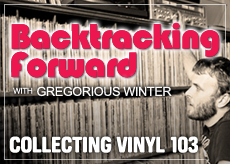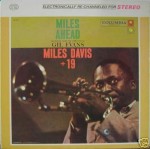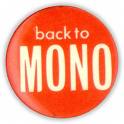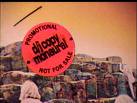Backtracking Forward: Collecting Vinyl 103
posted in: Features
 In this corner, weighing in at a total of a single, mammoth audio channel is the one, the only, the original Monaural! And in this corner, the heavy duty format with the multiple channels ” the new, improved Stereophonic Sound!! Forty years after the death of mono records, the battle still rages over which albums sound better via both recording methods. The recent reissue of the entire Beatles catalog in mono and stereo has revived this debate even further, and attracted newcomers who deliberate over which recordings capture the true sound an artist intended. But for collectors, the need to own all copies of an album has helped fuel a fierce and competitive market for rare mono LPs.
In this corner, weighing in at a total of a single, mammoth audio channel is the one, the only, the original Monaural! And in this corner, the heavy duty format with the multiple channels ” the new, improved Stereophonic Sound!! Forty years after the death of mono records, the battle still rages over which albums sound better via both recording methods. The recent reissue of the entire Beatles catalog in mono and stereo has revived this debate even further, and attracted newcomers who deliberate over which recordings capture the true sound an artist intended. But for collectors, the need to own all copies of an album has helped fuel a fierce and competitive market for rare mono LPs.
Stereophonic sound on commercially-available recordings was introduced in 1958 and surprisingly, people didn’t line up to experience the difference. At the time, the average music consumer’s audio equipment was meant to only play mono records and most commercial AM radio stations were broadcast in mono. Add to the fact that stereo records were one dollar more than their mono counterparts, meaning the upgrade to a stereo phonograph was equivalent to a few weeks worth of food for a family, and it’s plain to see why it took so long for the public to embrace this change. Whereas in today’s society new technology is embraced within 24 hours of its release, it took a few years for stereo records to gain a foothold.

Miles Davis butchered with Rechanneled Stereo (indicated on top of the album jacket)
Prior to the implementation of stereo on records, all LPs were issued in mono. For those digital, new-age junkies not savvy to the term, mono simply meant that all the vocals and instrumentation were being recorded through 1 channel during a session and that’s how it was heard. Stereo sound introduced the concept of using 2 or more audio channels during the recording process, and altering the way a disc was manufactured, to produce a sublime listening experience. Once consumers finally adopted the stereo medium and sales of mono recordings fell, labels returned to their back catalogs and reissued many of their original 1950s albums recorded in mono as stereo. Since they couldn’t re-record the session, the master tapes were futzed with and the single channel was forcibly separated into 2 to mimic the quality of stereo. These albums were labeled on the jacket as Electronically ReChanneled Stereo and Simulated Stereo and released in the early 1960s. Other record companies employed similar techniques but in most cases, the results were inferior ” the sound quality was muddy, instruments were not crisp and vocals were diluted. Stay away from these horrendously sounding records and always go for the original mono recording.
 A huge trend that has existed in the vinyl market involves collectors finding some of the last mono LPs that were produced in the late 1960s and early 1970s. Many of these mono records feature alternate mixes unavailable on their stereo counterparts, making them absolutely necessary in a completist’s collection. But in many cases, the mono mixes actually sound better. The Beatles’ Sgt. Pepper’s Lonely Hearts Club Band is a legendary example of a mono recording featuring a drastically different mix that many claim to prefer. The mono LP of The Doors’ self-titled debut in 1967 features a foul-mouthed Jim Morrison whispering in the background on The End which was cut from the stereo release. Janis Joplin’s classic LP with the Holding Company, Cheap Thrills, is another recording with an obscure mono release that seems to amplify Joplin’s booming and characteristic vocals.
A huge trend that has existed in the vinyl market involves collectors finding some of the last mono LPs that were produced in the late 1960s and early 1970s. Many of these mono records feature alternate mixes unavailable on their stereo counterparts, making them absolutely necessary in a completist’s collection. But in many cases, the mono mixes actually sound better. The Beatles’ Sgt. Pepper’s Lonely Hearts Club Band is a legendary example of a mono recording featuring a drastically different mix that many claim to prefer. The mono LP of The Doors’ self-titled debut in 1967 features a foul-mouthed Jim Morrison whispering in the background on The End which was cut from the stereo release. Janis Joplin’s classic LP with the Holding Company, Cheap Thrills, is another recording with an obscure mono release that seems to amplify Joplin’s booming and characteristic vocals.

Houses Of The Holy IN MONO! A Holy Grail Find!
Some of the last mono LPs and 45s were strictly produced for radio stations in 1969 and 1970 and released as white label promo copies. Classic albums like the first YES release and Déjí Vu by Crosby Stills Nash and Young experienced small runs of radio only mono pressings which featured slightly different mixes and mastering. While store stock stereo copies sell for just a few dollars, these rare mono only LPs fetch hundreds of dollars in today’s market. Seven inch singles held on even further throughout the early 1970s as certain labels continued pressing hit songs in mono on one side and stereo on the other. One piece of knowledge this vinyl digger does not hold is: What was the last mono record (LP & 45) that was ever pressed for commercial use in the United States? Talk amongst yourselves.
Classical and jazz enthusiasts have taken staunch sides in the debate. Since most of the foundational jazz sessions from the 1950s were recorded and released in mono, the fake stereo counterparts of those LPs are shunned by collectors and serious audiophiles. On the other side of the fence are classical aficionados. Classical music had always been a top seller throughout advances in recorded music but once the major labels began adopting new stereo recording techniques, classical audiophiles were born. Mercury Records, RCA Victor, Decca and London Records all produced and marketed true Stereophonic recordings of performances throughout the late 1950s and 1960s. Today, mint copies of many of these LPs demand top dollar in the market, while their mono counterparts are worthless.
Dwelling on this topic jogged my memory of an amusing, High Fidelity-esque story about a record store I frequented and the craftiness of its owner when buying records that came through the door. A man came in one day with a stack of albums to sell to the shop. As the owner proceeded to go through the pile, a copy of Jimi Hendrix’s Are You Experienced came to the surface. The customer pointed out that the copy he had was the mono version and not the stereo ” a true rarity indeed since that album was released when mono was being phased out (and its current market value is over 500 hundred dollars in clean condition.) Without missing a beat, the shop owner proclaimed with the straightest of faces, Hmmm, that’s a shame. People like hearing Hendrix’s guitar go back and forth between the speakers. Too bad you didn’t have the stereo version. After the collection was bought on the cheap, and the customer left with some cash in hand, a store employee turned to the owner and laughed, You didn’t just that! Still clutching the mono LP (which in his head already had a potential buyer that was a phone call away), he proclaimed, I did and I will sleep well tonight” dinner’s on me!
Keep Digging!
-Gregorious-
